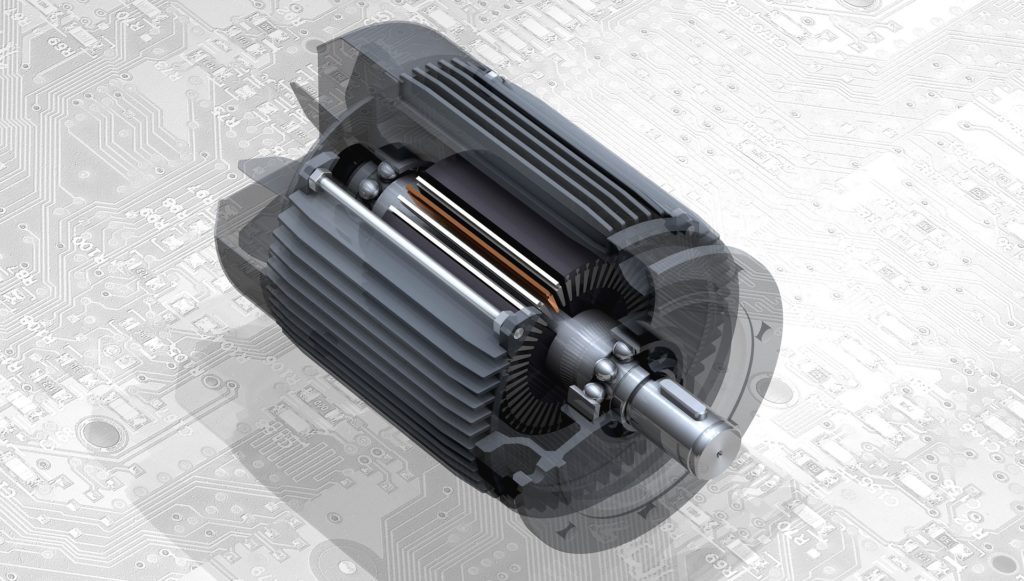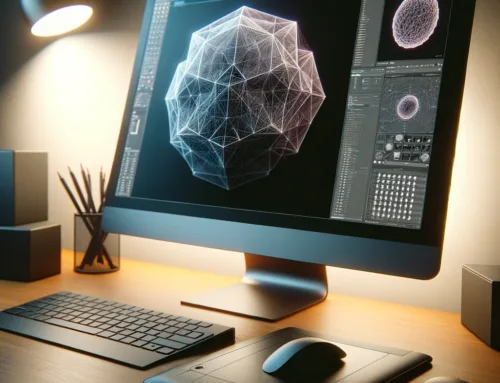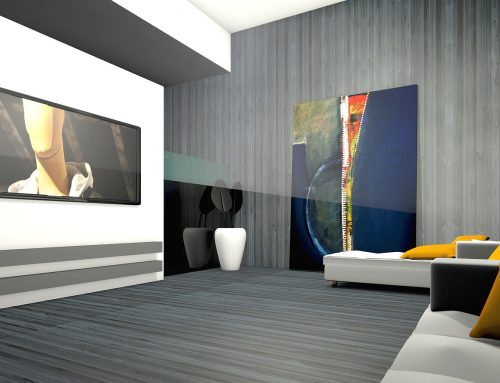Welche Computer-Aided Design (CAD)-Software Sie für den 3D-Druck kennen sollten.
3D-Design ist oft einer der am wenigsten diskutierten Aspekte des 3D-Drucks, aber einer der wichtigsten. Bevor Sie ein Objekt mit einem 3D-Drucker ausdrucken können, muss es zunächst entworfen werden. Mit Hilfe einer CAD-Software können die Studenten jede Art von 3D-Objekten entwerfen, die sie benötigen, und dieses Objekt dann mit dem Drucker erstellen.

Arten von 3D Design Software.
Es gibt viele 3D-Konstruktionsprogramme, die jeweils einen eigenen Ansatz für den 3D-Konstruktionsprozess bieten. Laut dem MakeBot Educator`s Guidebook fallen diese Designprogramme in der Regel in drei Hauptkategorien.
Solid-Modellierung.
Diese Art von Programm wird zur Erstellung von 3D-Modellen mit realen Anwendungen verwendet, einschließlich der Herstellung von Funktionsteilen. Die Solid-Modellierung gibt dem Anwender die Möglichkeit, verschiedene Objekte zu addieren und zu subtrahieren oder einzelne Teile zu völlig neuen Objekten und komplexen Baugruppen zusammenzusetzen. Die Solid-Modellierung ist nützlich, um mechanische Strukturen mit Abmessungen zu erzeugen, die reale Bedingungen simulieren. Es hat auch den zusätzlichen Vorteil, dass die Parameter während der Arbeit gespeichert werden können. Auf diese Weise können Benutzer bestimmte Abmessungen ihres Modells ändern, ohne neu beginnen zu müssen.
Digital Sculpting gibt dem Benutzer die Möglichkeit, das klassische Digital Sculpting zu simulieren. Digital Sculpting-Programme bieten einen simulierten Ball of Clay und virtuelle Werkzeuge, die physikalische Digital Sculpting Tools nachahmen. Mit diesen Werkzeugen können Designer dann Objekte mit komplexen Details „formen“. Diese Art der Modellierung erfordert oft den Einsatz spezieller Hardware, wie beispielsweise eines Tablets zum Zeichnen. Modelle können an jeder Stelle des Designprozesses geändert werden, was es dem Designer ermöglicht, jede Form sorgfältig zu untersuchen, um ein erfolgreicheres Design zu schaffen.
Die Polygon-Modellierung ist ein fortgeschrittener Ansatz zur Modellierung von Objekten, bei dem deren Eigenschaften mit Hilfe von Polygonen definiert werden. Diese Art der Modellierung gibt Benutzern die Möglichkeit, das Mesh, die Flächen, die Ecken und Kanten eines Modells zu steuern. Ein Polygon ist eine Form mit mindestens 3 Nodes (oder Seiten in einem 3D-Raum). Wenn ein Polygon an sich existiert, wird es üblicherweise als Fläche bezeichnet. Wenn eine Gruppe von Polygonen über gemeinsame Nodes verbunden ist, spricht man von einem Mesh, und das ist es, was die Polygonmodellierungssoftware ihnen ermöglicht zu steuern. Es ermöglicht auch die Erstellung von hochdetaillierten und komplizierten 3D-Modellen und hat reale Anwendungen in Branchen wie Film, Gaming und Animation.
Empfohlene und kostenlose 3D-Design-Programme.
Wenn Sie gerade erst mit dem 3D-Design beginnen, empfehlen wir ihnen, mit der Solid Modellierung zu beginnen. Sobald Sie und ihre Schüler mit dem Designprozess vertraut sind, können Sie zum Digital Sculpting übergehen. In diesem Sinne sind unten unser Empfehlungen für kostenlose 3D-Konstruktionsprogramme aufgeführt, mit denen Sie beginnen können.
Tinkercad (Solid-Modellierung).
Tinkercad ist ein kostenloses, webbasiertes, Chromebook-kompatibles 3D-Design-Tool, mit dem Studenten ihre eigenen Objekte erstellen und bearbeiten können. Mit Tools für Anfänger und erfahrene Designer können ihre Schüler ihre Kreativität einsetzen, um Design-Herausforderungen zu meistern. Tinkercad erstellt 3D-Objekte, indem es den Benutzern ermöglicht, Formen einzufügen und diese anzupassen oder zu kombinieren, um 3D-Modelle zu erstellen. Tinkercad verfügt auch über eine Vielzahl von Tools, wie z.B. ein Lineal, um genaue Abmessungen einzugeben. Diese Funktion macht es zu einem einfach zu bedienenden Programm, auch ohne Designerfahrung.
3D Slash (Digital Sculpting).
Inspiriert von Minecraft, ist 3D Slash eines der einfachsten Tools zur Erstellung und ein großartiges Programm, um Studenten in die Welt des 3D-Designs einzuführen. 3D Slash lässt die Benutzer mit einem 3D-Würfel (Quader) beginnen und dann virtuelle Werkzeuge (wie Hammer, Meißel und Pinsel) verwenden, um den Würfel in das 3D-Objekt zu manipulieren, das sie erstellen möchten.
Sculptris (Digital Sculpting).
Sculptris wird für Anfänger wegen seiner intuitiven Benutzeroberfläche empfohlen und bietet eine unterhaltsame und ansprechende Möglichkeit, mit dem Digital Sculpting zu beginnen. Es bietet eine ausgezeichnete Möglichkeit, das 3D-Design zu erforschen und ist leicht zu erlernen, selbst für Benutzer ohne Designerfahrung. Sculptris kann verwendet werden, um komplexe Modelle von Tieren, Filmen oder Fernsehcharakteren sowie Repliken aller Artefakte zu erstellen. Sculptris erlaubt es jedoch nicht, Messungen oder Abweichungen für Objekte zu definieren, so dass alles, was in der Software entworfen wird, in einem anderen Designprogramm bemessen werden muss.
SketchUp (Solid-Modellierung).
SketchUp ist eine 3D-Modellierungssoftware, die einfach zu erlernen und unglaublich einfach zu bedienen ist. Es ist ein großartiges Programm für diejenigen, die Architekturmodelle entwerfen und drucken möchten, da es eine einfache Möglichkeit für Benutzer bietet, genaue, geometrische Formen zu erstellen. SketchUp ermöglicht es Benutzern, Linien und Formen virtuell zu zeichnen, um Objekte mit bestimmten Abmessungen zu erstellen. Anschließend können Sie diese Objekte verschieben, ziehen, dehnen, kopieren und malen, um jedes beliebige 3D-Objekt zu erstellen. SketchUp Free ist der einfachste und am einfachsten zu bedienende 3D-Modellierer auf dem Markt. Schulen, die Google Classroom verwenden, können auch SketchUp für Schools herunterladen, die die Kern-Software SketchUp ist, die jetzt in einem Webbrowser für jede Schule verfügbar ist, die bei G Suite für Education angemeldet ist.
Weitere 3D Software Programme.
Wir haben Thingiverse bereits erwähnt, aber wir können nicht genug von dieser großartigen 3D-Printing-Ressource bekommen. Thingiverse wurde von MakerBot entwickelt und ist die größte 3D-Printing-Community der Welt mit über einer Million druckbarer 3D-Designs, die von der großen Thingiverse-Community erstellt wurden. Darüber hinaus bietet Thingiverse Education über 300 kostenlose Lektionen mit 3D-Design und Drucken für eine Vielzahl con Klassenstufen und Themen.
Wir hoffen, dass wir ihnen einen ersten kurzen Überblick über verschiedene Software-Lösungen im Bereich des 3D-Drucks geben konnten. Wenn Sie noch Anregungen oder Fragen haben sollten können Sie sich sehr gerne an unsere Fachexperten in unserem Forum wenden.
Vielen Dank für ihren Besuch.


